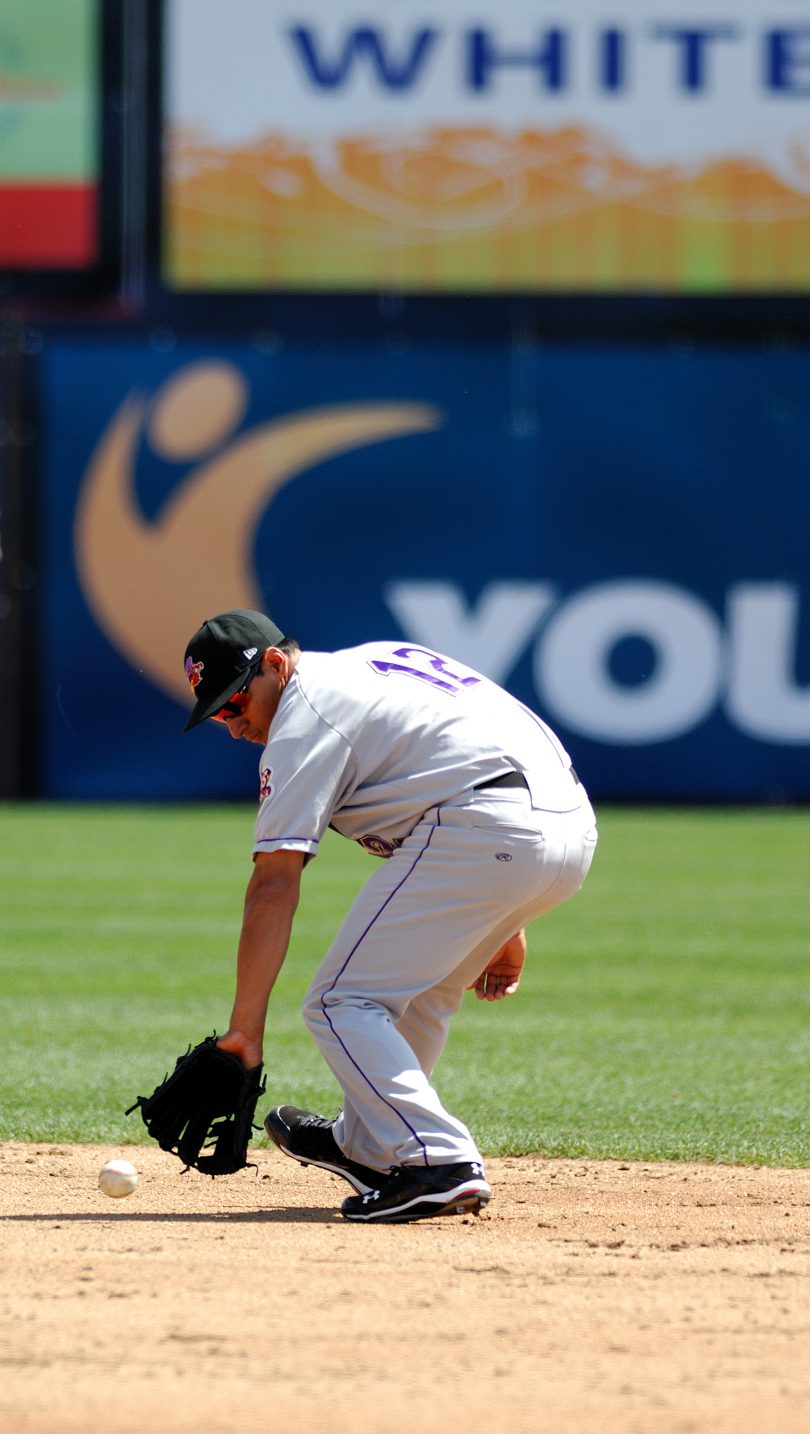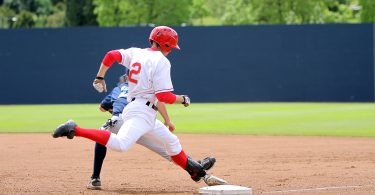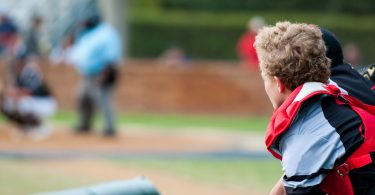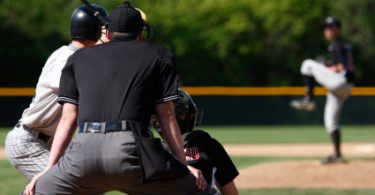A college shortstop is required to be a defensive creature. Teams will carry, and play, poor hitting shortstops, if they are really good defenders. A good hitting shortstop is a very valuable commodity. Lots of shortstops will be speed guys. Shortstop is a position that demands a quick player with a lot of range and a strong enough arm to make the longest throws of any infielder. Bigger guys, who aren’t as agile, often get moved to third base.
Defensive Skill Set
On defense, shortstops have a lot of different responsibilities. The shortstop is in charge of the infield and all the communication between the infield and the outfield. The shortstop must be on the same page with the pitcher and catcher so that he knows what signs are being used, what pitch is about to be thrown, and what picks are on. The shortstop can never take a pitch off. He has a responsibility in every play and is considered the most important infielder on the diamond.
Standout tools are a given for the college shortstop. Most of the time, it’s a good internal clock paired with great glove skill, above average range (quickness/speed), and plus arm strength. Many cases, it’s all of these things.
A good college shortstop will make the routine play every time. A great shortstop will add to that with increased range and by making spectacular plays. But most teams will be perfectly happy with a guy who can make the routine play 100% of the time. Now of course, everyone will make errors; that’s just part of the game. Consistency is key. To be a good shortstop, practice the routine play. Be smooth. Desire to be consistent and reliable. Shortstops at the college level must expect to make the play on every ball hit in their general direction, on the ground or in the air. Simply put, if you want to play shortstop in college, you have to have to have tools, athleticism, and a strong mental game to back it up. You must be the most athletic and dependable defender on the field.
Offensive Skill Set
While it is lock-down defense that gets someone penciled into the shortstop position, shortstops today are expected to contribute offensively, as well. There are many ways to do so. If you are a light hitting, bottom-of-the-order-type shortstop, plate discipline and barrel control are important skills. Learn the strike zone, be a tough out, and be willing to take your walks. Coaches will look for you to get on base at a high clip, even with a low batting average. Be able to execute small ball directives from your coach, the bunt, the hit-and-run, and have productive outs. Be a smart base runner and spark plug on bases. But mostly, win games with your glove.
If you’re a top or middle of the order-type shortstop, your offensive expectations will be a little different. A true two-way talent who can stick at shortstop in college is rare, but a coach’s dream! To fill this role, you’ll have to produce like other top of the order hitters. Anything more than getting on base and being a spark for your team is a huge bonus.
A Defense-First Position
You may gain a little leeway with the glove by being great offensively, but not much. Simply put, if you can’t pick it on defense you’ll just be moved to a different position.
By now, you get it. As a shortstop, defense is key. You want to work on your offensive production but being a big run producer is not absolutely necessary. Coaches know that your defense can change games. So if you are looking to be a college shortstop, be a leader on your team, be a leader on defense, and focus your game on being the guy who makes the routine play every single time while still holding his own and contributing offensively.







